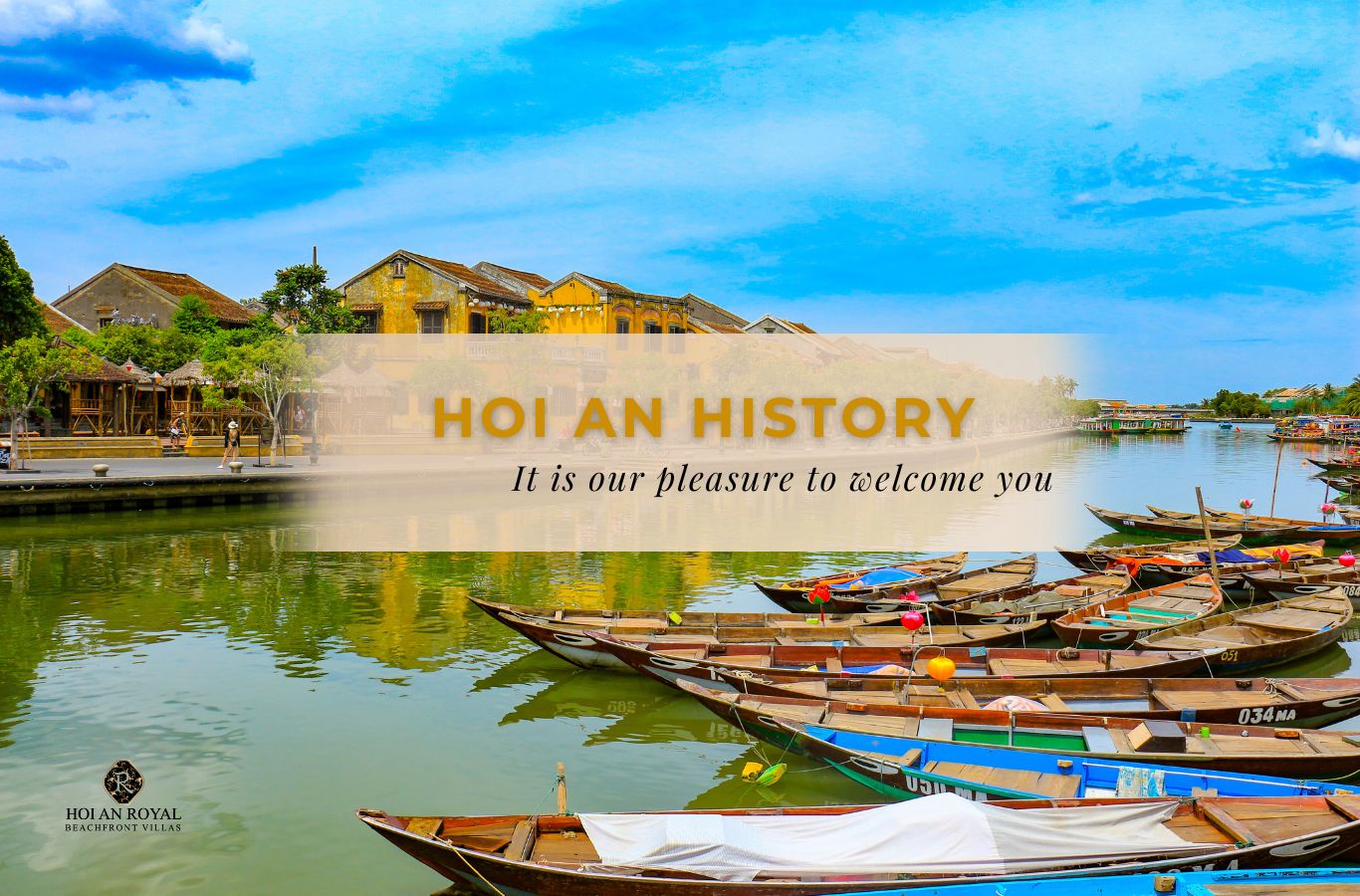Hoi An history is not just told through moss-covered walls, but is also a journey of cultural and commercial development spanning centuries. If you’re curious about the origin of its name, its founding period, or iconic historical landmarks, don’t miss this article from Hoi An Royal Beachfront Villas!
Table of Contents
ToggleAn overview of Hoi An
The origin of the name “Hoi An”
The name ‘Hoi An’ reflects its origins as a prosperous and safe trading port — a place where people and goods converged. Around the second half of the 16th century, during the Le dynasty in Vietnam, Hoi An began to take shape and develop as an important commercial urban center. The name reflects the region’s role as a gathering place for merchants and international trade, as well as a safe zone for trading activities.
Where is the Hoi An Ancient Town? Geographic location and strategic role
Hoi An Ancient Town lies along the Thu Bon River, in Hoi An City, Quang Nam Province, Vietnam. Its geographic location is highly favorable, about 30 km south of Da Nang city, bordered by the East Sea to the east, Duy Xuyen district to the south, and Dien Ban town to the west and north.
With its position on the coastal plain and near the Thu Bon estuary, Hoi An used to be a bustling international trading port from the 16th to the 18th century. It was a crucial trading hub for Japanese, Chinese, and Western merchant ships, playing a strategic role in economic development and cultural exchange in Southeast Asia during that period.
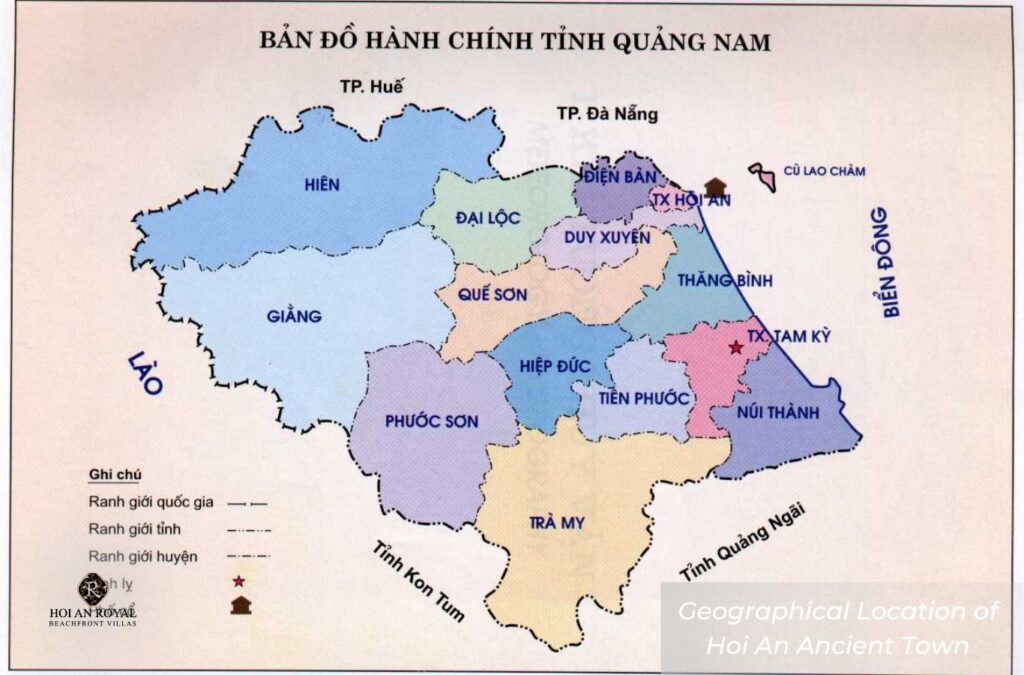
When was Hoi An Ancient Town built?
Hoi An Ancient Town was formed around the second half of the 16th century, under the Le dynasty. The urban development of this town was closely tied to the governance of Nguyen Hoang in Quang Nam after 1570, when he and his son Nguyen Phuc Nguyen built fortifications and expanded international trade.
Hoi An in the past through historical photos and documents
These valuable photos and historical documents offer a glimpse of Hoi An from decades ago — a serene ancient town rich in history. Through each image, the history of Hoi An comes to life with authenticity and emotion.
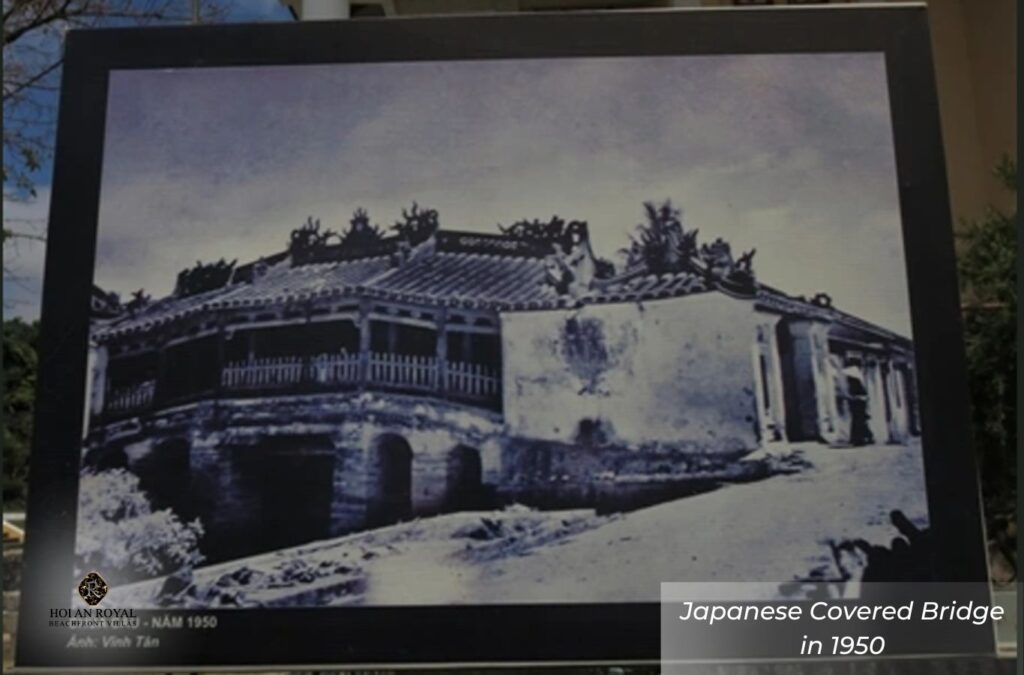
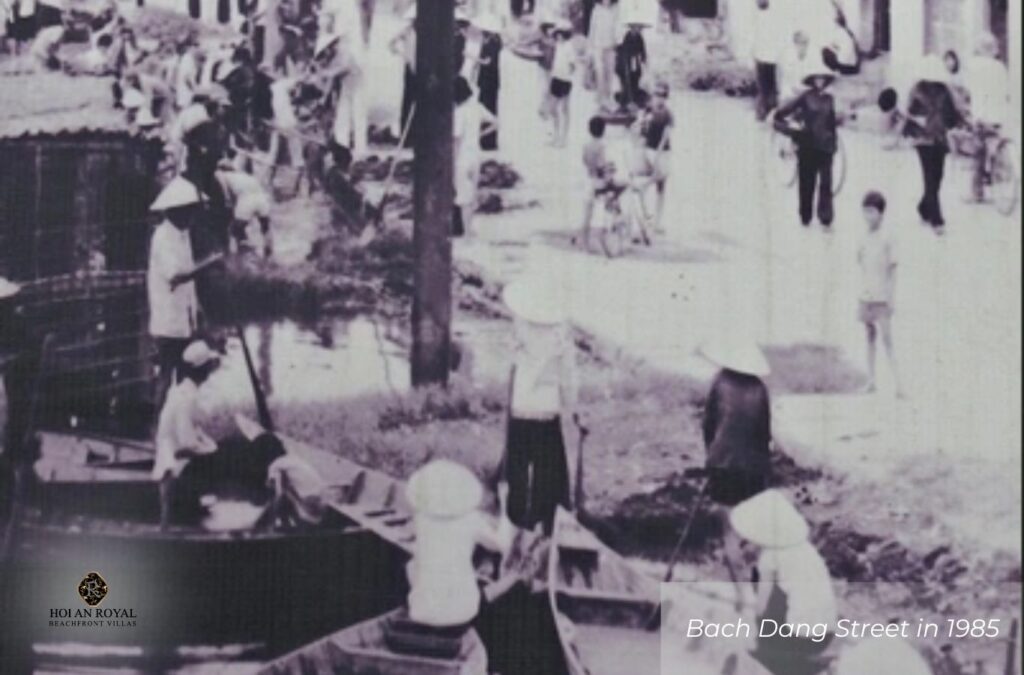
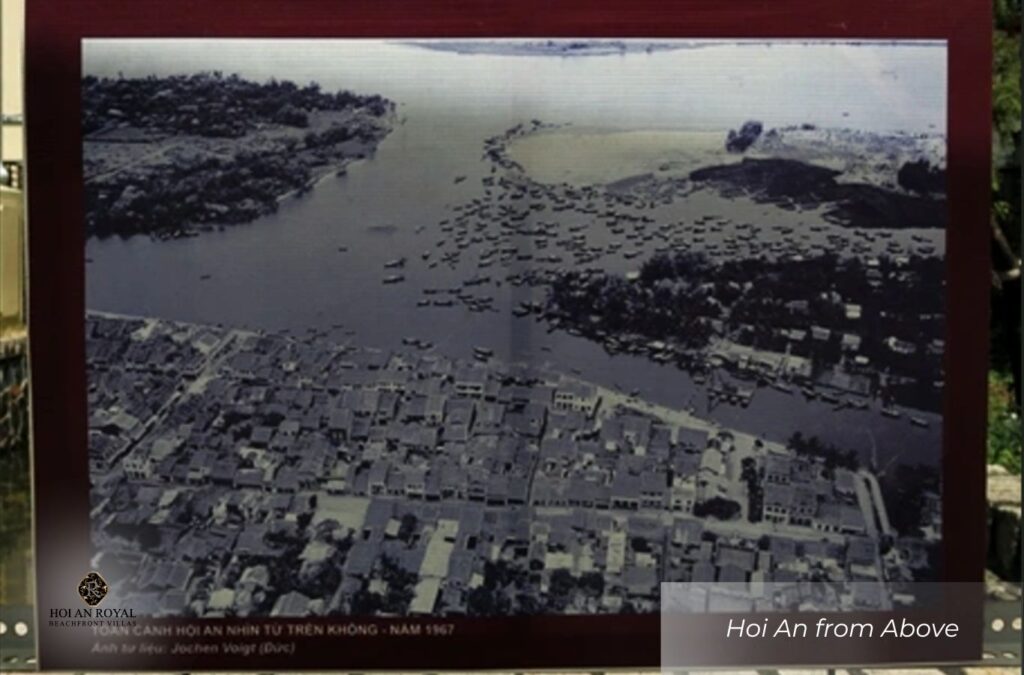
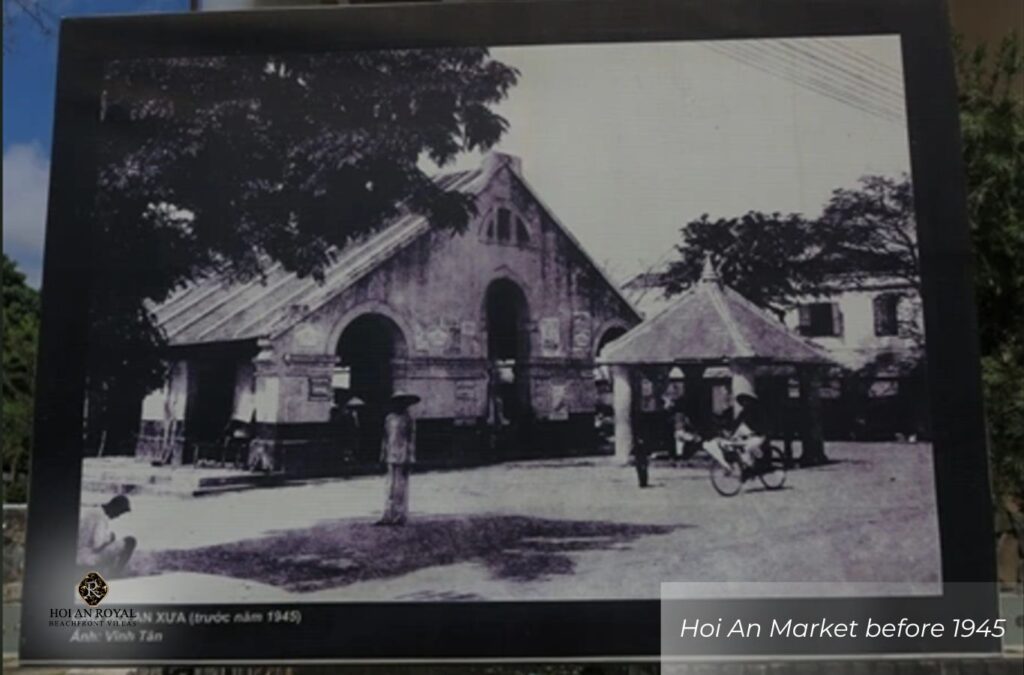
Outstanding architectural structures in Hoi An history
Hoi An is famous for its ancient houses and is home to many unique architectural structures that reflect its diverse cultural heritage. Below are some iconic constructions associated with the historical development of this ancient town:
Ancient pagodas, temples, and shrines
Hoi An has many ancient religious structures, including pagodas, temples, and shrines dedicated to deities and guardian saints, reflecting the diverse beliefs of its residents through the ages. Within the ancient town, there are about 19 pagodas and 43 shrines, many of which date back to the 16th to 18th centuries.
These pagodas are often built from wood, brick, and stone, intricately decorated and harmoniously combining traditional Vietnamese architecture with Chinese and Japanese influences. The temples and shrines served not only as places of worship but also as protective sites, offering blessings and safety to residents and merchants during Hoi An’s time as a bustling international port.
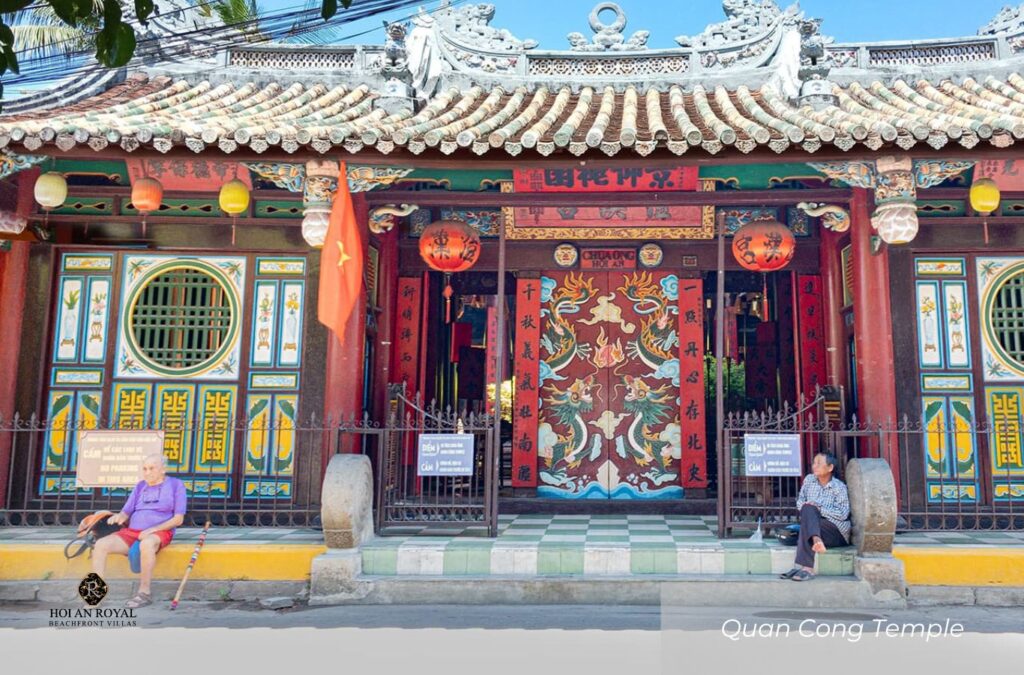
Assembly halls
Assembly halls are distinctive structures of the Chinese and other immigrant communities in Hoi An, used for cultural, religious, and economic gatherings. Phuc Kien, Quang Dong, and Trieu Chau assembly halls are prime examples, built on a large scale with intricate architecture featuring curved tiled roofs, elaborate carvings, Buddha statues, reliefs, and unique paintings.
These halls functioned as community centers, supporting merchants and residents in business activities and preserving distinct cultural traditions.
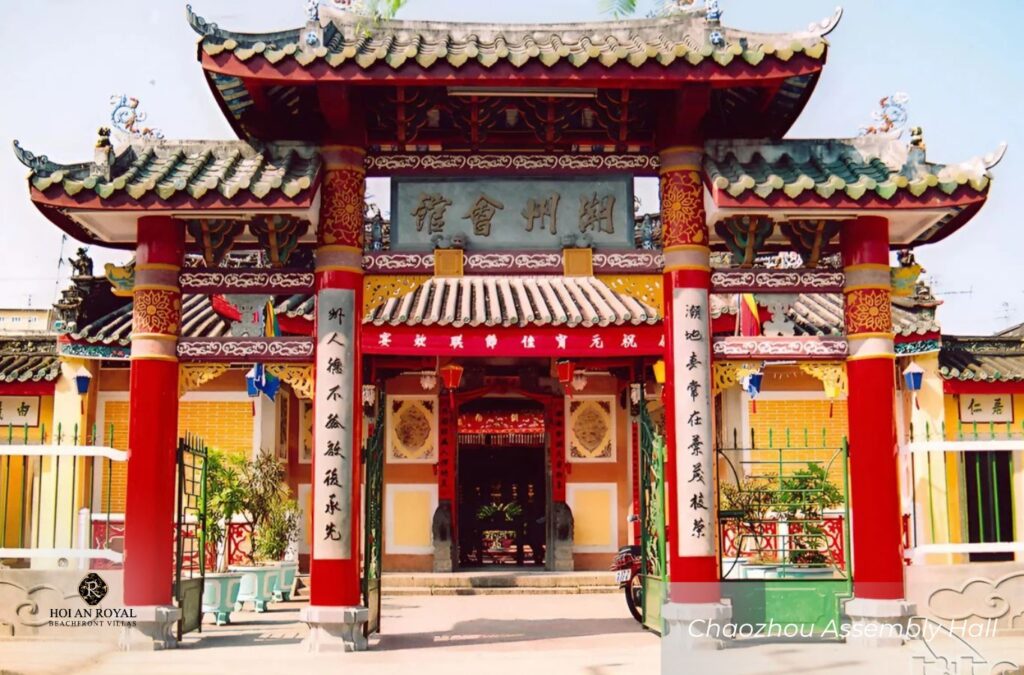
Ancestral houses – heritage of longstanding families
Ancestral houses serve as places of worship for the ancestors of prominent families in Hoi An, reflecting the deep ties of family and clan. There are about 38 ancestral houses in the ancient town, with Tran family ancestral house being the most notable due to its unique architecture, refined layout, and strict adherence to feng shui principles.
The interior of these houses is intricately carved, demonstrating respect for ancestors and honoring long-standing family traditions. These spaces serve both as worship sites and cultural centers where traditional family festivals are organized.

Chua Cau – a symbol of trade and culture
Chua Cau (also known as the Japanese Covered bridge) is the most iconic symbol of Hoi An Ancient Town, built in the late 16th and early 17th centuries by the Japanese community living there.
The bridge features a roof, stretching nearly 19 meters in length and 3 meters in width, with a design that beautifully blends Japanese and Chinese architectural styles. Inside the bridge are statues of two dogs and two monkeys, symbolizing feng shui protection against natural disasters and evil spirits.
More than just a transportation bridge, Chua Cau is a cultural icon, demonstrating the convergence of different cultures and the critical role of Hoi An in international trade during that era.
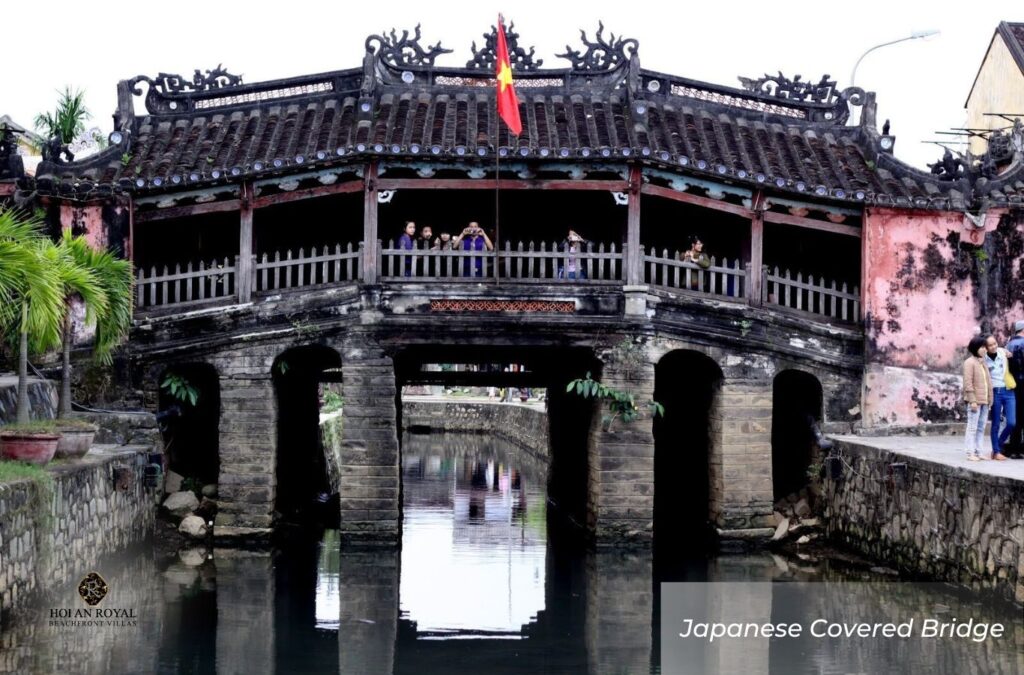
Hoi An history and UNESCO world cultural heritage
Hoi An is an ancient town located by the Hoai River, formed and developed since the 16th century. During its golden age, Hoi An was one of the most bustling international trading ports in Southeast Asia, attracting merchants from China, Japan, the Netherlands, India, Spain, and many other countries.
In 1985, Hoi An was recognized by the Ministry of Culture of Vietnam as a National Historical and Cultural Monument. By 1999, UNESCO officially designated Hoi An as a World Cultural Heritage Site, acknowledging the town’s well-preserved and carefully maintained ancient architecture.
Today, Hoi An is a “living museum,” preserving architectural structures from the 17th to 19th centuries along with a rich array of intangible cultural values such as customs, religious practices, folk arts, and traditional festivals.
Why should travelers explore Hoi An history?
Here are the reasons why learning about Hoi An history is an essential part of your journey:
- Experience rich culture: Learning about history allows you to both admire and deeply appreciate the beauty of ancient architectural structures, such as old houses, assembly halls, temples, pagodas, and especially the Japanese bridge – the iconic symbol of this old town.
- Contribute to heritage preservation: By learning and participating in cultural activities in Hoi An, you are contributing to the preservation of the city’s valuable heritage, helping future generations continue to explore and enjoy the timeless charm of Hoi An.
Hoi An’s history is a thread that weaves the past and present together, reflecting the cultural depth and soul of this land. Every structure, every name tells a story, allowing Hoi An to preserve its unique identity — tranquil, ancient, and captivating — even amid the rhythm of modern life. For those seeking to immerse themselves in this timeless beauty, Hoi An Royal Beachfront Villas is where the story of Hoi An continues, told gently through a peaceful seaside retreat.
